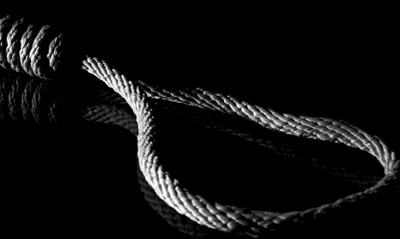For decades scholars have taught and activists labeled 19th century Southern white behavior towards African Americans as terrorism. Equally, in a serious but humorous manner a popular T-Shirt depicts images of Native Americans as Fighting Terrorism since 1492.
However, as radical Islam began attacking American personnel and interests, the issue of terrorism, brought home this reality and it has now become a household word. More important, an article published in The New York Times and dated Tuesday, February 10, 2015, p. A 11 and written by Campbell Robertson is entitled History of Lynchings In the South Documents Nearly 4000 Death. Essentially the article focuses upon the work of an organization entitled Equal Justice Initiative under the praise-worthy leadership of civil rights attorney Mr. Bryan Stevenson and his group who chronicled and identified some 3,959 victims of racial terror lynchings in 12 southern states from 1877 to 1950.
Equally significant, the year 1877 is very important in American history for many characterize it as a betrayal in which Rutherford B. Hayes, a Southerner, was spuriously placed into the Presidency to succeed Ulysses S. Grant. This artificial installation of the new President removed the protections of federal troops from the South, ended Reconstruction and opened the doors of ascendancy to white supremacy that began to unleash unspeakable horrors against the freed, African American, peoples.
Campbell Robertsons article notes that while the states of Texas through Louisiana, Mississippi, Alabama, Florida, Georgia, South Carolina, North Carolina, Tennessee, Arkansas, Kentucky, and Virginia were numbered, Arkansas, Louisiana and Mississippi, often called The Deep South, had the most such killings. In Phillips County, Arkansas, for example, 237 people were lynched in 1919 during the Elaine race riot alone for a total of 243 listed death for that year. Next came Louisiana with Caddo Parish (54), Lafourche Parish (50), Tensas Parish (4) and Ouachita Parish (35). In 73 Years of Lynchings the article continues, The most recent data on lynching, compiled by the Equal Justice Initiative shows premeditated murders carried out by at least 3 people from 1870-1950.
The killers claimed to be enforcing some form of social justice. The alleged offenses that prompted the lynchings included political activism and testifying in court. These are fundamental rights guaranteed by the Constitution and required for good citizenship; yet they were systematically and forcefully denied these citizens. However, what Mr. Stevenson intends to do in his project is to erect markers on every possible lynching site to identify the place where each gory crime was committed. Naturally, pulling back the covers of this vicious part of this nations history and exposing the involvement of families, farms and personnel in these racial tragedies do not sit well with current white supremacy property owners, politicians and ideologues for the implications they present.
A good example of this denial is reminiscent in the 2012 Republican campaign to deny Barack Obama a second term as President. It came out Governor Rick Perry of Texas is the owner of a piece of land named Nigger Head Mountain. He claimed some time previously his father had painted over the sign that was prominently displayed. Naturally, then, concerned citizens had wondered whether on that site, a famous memorial had been erected to an equally famous Black man who had benefited that community or whether that was a killing site where many a Nigger Heads rolled! Now, persons can see the inherent implication of marking such sites for the embarrassment this silent yet deadly legacy presents.
The history books have taught that American heritage is traceable mainly to British colonists who settled the land. In their brightest moments Presidents such as Ronald Reagan and Jimmy Carter traced their family heritage to illustrious individuals and proudly boasted of this connected badge of honor. One wonders how many will willingly allow such markers on their property and be publicly associated with those murderous packs Ms. Constance Baker-Motley and others experienced and wrote about from the time of the 1877 betrayal, when federal troops, removed from the South, enabled and resulted in formation of the Ku Klux Klan, White Citizens Council, Knights of the White Camelia, Jim Crow legislation and practices particularly aided by the Dred Scott historic Supreme Court decision of 1857, in which Chief Justice Roger Taney ruled that A Black man has no rights a White man is bound to respect. During Jim Crow times, such practices weighed heavily to influence the 1896 Plessey V. Ferguson ruling that in fact formally established de jure and de facto segregation as Separate but Equal which was actually Separate and Unequal. That ruling was finally struck down in Brown v. Board of Education of Topeka, Kansas in 1954.
In this hell on earth, lynching was not the only tool in the repertoire of the racist who perpetrated these heinous crimes against African-American citizens finally granted Americas momentous protections under the 13th, 14th, and 15th Amendments enshrined in the United States Constitution. That is, after two centuries of horrendous chattel slavery, that fundamental and hard won right to vote was denied through orchestrated chicanery, intimidation, threats, tar and feathering, killings and economic peonage perpetuated through share cropping and crop lien, agricultural tyranny. But, most brutal was lynching which became a spectator sport entertaining whole families such as the image depicted in the Black Book showing a Black man being roasted on a bed of coals. This was an extremely agonizing death much more different than the Roasting Whoopi Goldbergs boyfriend gave her on television. This was indeed a horrifying experience to see and smell a human being burnt to the delight of pictured White men, young children and old people, gleefully enjoying the ghastly spectacle. This is the history partially hidden that needs to be told.
Importantly, seldom is an article in The New York Times, the paper of record, followed by a lead Editorial the next day, but this story was so compelling that it did under the title Lynching as Racial Terrorism. For sure, many persons of all political and social persuasions across the country have criticized The New York Times for being a vehicle of liberal bias. However, even though persons have a problem with such quality reporting, The Times serves as an agent of the social conscience of this nation, raising significant and deep-rooted human concerns while the greater political leaders and ethical champions turn a blind eye and deaf ear to the plight of these and other victims of social, economic and even political injustice, constantly crying out for relief.
The lead paragraph of The Times Editorial states, It is important to remember that the hangings, burnings and dismemberment of black American men, women and children that were relatively common in this country between the Civil War and World War II were often public events. They were sometimes advertised in newspapers and drew hundreds and even thousands of white spectators, including elected officials and leading citizens who were so swept up in the carnivals of death that they posed with their children for keepsake photographs within arms length of mutilated black corpses. Even further, These episodes of horrific, communitywide violence have been erased from civic memory in lynching-belt states like Louisiana, Georgia, Alabama, Florida and Mississippi. But that will change if Bryan Stevenson, a civil right attorney, succeeds in his mission to build markers and memorials at lynching sites throughout the country to confront an era of racial terror directly and recognize the role that it played in shaping the current racial landscape.
Seldom, if any whites at all were held accountable for such unspeakably horrific behaviors. President Nelson Mandela after 27 years of unjust incarceration empowered a Truth and Reconciliation Committee to record, chronicle and forgive the ghastly behaviors of some 85 years of Apartheid South Africa. Yet, it is unthinkable for such a panel to be impanelled in the U.S. in order to officially look into and record, then to seek the forgiveness of the victimized and their descendants. Perhaps it is because the victimizers past and present time memories are too horrendous to forget.
As Mr. Stevenson argued, Lynching declined as a mechanism of social control as the southern states shifted to a capital punishment strategy, in which blacks began more frequently to be executed after expedited trials. The legacy of lynching was apparent in that public executions were still used to mollify mobs in the 1930s even after such executions were legally banned. Recognizing the powerful role lynching played in shaping Southern society, the report continued, Most Southern terror lynching victims were killed on sites that remain unmarked and unrecognized. Nevertheless, in contradictory and wicked irony, the Southern landscape is cluttered with plaques, statues and monuments that record, celebrate and lionize generations of American defenders of white supremacy, including public officials and private citizens who perpetuated violent crimes against black citizens during the era of racial terror.
That is to say, the heroes of the Rebel South must be known and their memories perpetuated while the memories of associated terroristic horrors must not be. Or, put another way, we know of them in Glory but we should not know of them in Savagery.








